1. Energy drinks are bucking the own label trend as brands fuel growth
2. Spend on energy drinks is shifting to the supermarkets
3. Gen Z shoppers are shaping the category
4. Concerns are mounting over soft drinks sweetener aspartame
5. Natural energy drinks are opening up the market
6. Growing gym attendance is making energy drinks work harder
7. Flavours are growing faster than original energy
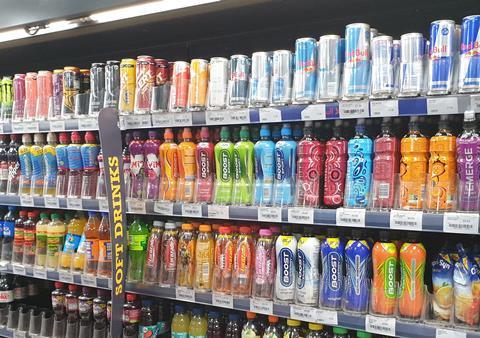
1. Energy drinks are bucking the own label trend as brands fuel growth
Worth £1.8bn in the total market, energy drinks are the biggest and most profitable segment of drink-now soft drinks (IRI). The market shows no sign of slowing down, with sales growing at 13% (ibid).
Meanwhile, the convenience channel has seen value sales soar 14.7% to hit £757m (IRI), according to Britvic Soft Drinks Review (BSDR). This growth was driven by Red Bull, with sales rocketing by £50.4m (+17.6%), while Monster Energy contributed £32.7m (+48.7%) (IRI).
Own label within soft drinks is growing at a rate of 3.1% below brands (Nielsen) and branded soft drinks spend is 36% higher than own label in the multiples [Nielsen], which suggests shoppers are remaining loyal, claims Red Bull.
While rising costs are pushing shoppers to own-label options in other categories, the strength of brands in energy drinks remains. “Ninety-seven per cent of [total] energy sales come from brands [IRI],” says AG Barr.
Meanwhile, the Sports Drinks market within convenience totalled £116.2m, up 18% YOY (IRI), states the BSDR.
Convenience stores are well placed to capitalise on the growth in sales over the summer months. Matt Gouldsmith, wholesale channel director at Suntory Beverage & Food GB&I, says convenience stores benefited the most last year when temperatures rose, recording 5.4% growth in sports drinks sales between mid-July and mid-August (Nielsen).
“The return of on-the-go shopping has helped Lucozade sales grow by £69m, with volume sales up by 6.6% [Nielsen],” he adds.

2. Spend on energy drinks is shifting to the supermarkets
However, there is a threat to independent retailers. Rising costs are pushing shoppers to the multiples. Data expert Circana reveals that value is moving from symbols & independents towards the supermarkets as shoppers look for cheaper prices. Symbols & independents have lost 1.5PP in sports and energy drinks value share over the past 12 months (data up to 20 May 2023).
“Convenience has a 68% price premium over supermarkets in soft drinks,” says Alex Lawrence, senior strategic insight director at Circana.
Symbols & independents are also bucking the trend set by supermarkets for shrinking sports & energy drinks ranges. “While supermarkets have reduced their sports & energy ranges, symbols & independents have grown theirs by 11% on average,” says Lawrence.
Pete Penlington, of Nisa Local in Offenham, Worcestershire, advises retailers: “Don’t be afraid to drop products to increase space for the bestsellers. We removed some of our slower-selling Monster and Relentless lines to make way for more facings of their key products. We have seen sales increase as a result.”
ADVERTISEMENT
Energise growth with Red Bull Editions
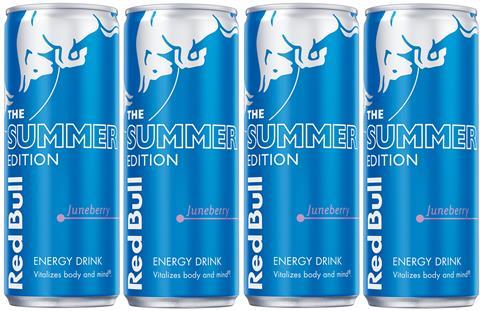
Shoppers love to explore new flavours. And Flavoured Sports & Energy drinks are vital during the summer, as shoppers look for hydration as well as functionality. Drive growth of the category, flavours are up +24.4% YoY vs unflavoured at +12.0%1 and Red Bull is instrumental to this, outperforming total flavoured Sports & Energy by four times at +92%2.
As a result Red Bull Editions have tripled in value within the last two years3, growing +81% shoppers incrementally YoY4 and Red Bull’s latest Summer Edition with the taste of Juneberry has the highest purchase intent of any previous Summer Edition at 75%5. Available in 250ml, 250ml PMP, 355ml Sugarfree and 250ml Sugarfree 4-pack.
1 Nielsen Scantrack, Total Coverage, Value Sales Growth, MAT, w.e. 22.04.2023 2 Nielsen Scantrack, Total Coverage, Value Sales Growth, MAT, w.e. 22.04.22 3 (From £9.7m to £35.5m) Nielsen Scan Track |Total Editions | Value | MAT 06.05.23 vs YA 4 Kantar | Take Home Panel | Spend £ |52 w/e 02 October 2022| Red Bull Editions 5 Taste Test Red Bull 2021
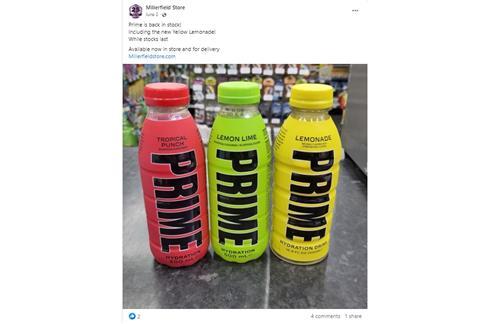
3. Gen Z shoppers are shaping the category
While Red Bull and Monster gained volume and value share through range growth, according to Circana, Prime is the energy brand to have driven value share above volume, gaining 1.8PP share in symbols & independents in the past year (data up to 20 May 2023).
“You’ve got to keep an eye on social media,” advises Abdul Ramzan, who runs Millerfield Store (Premier) in Kennoway, Fife. “The big trend we’ve noticed in the past year is that we used to get new products in and then had to create the demand. Now people come in and ask us for them because they’ve seen them on social media.”
Abdul advises retailers to build time into their routines to check TikTok for new products. “We’ve just brought Prime Yellow Lemonade in, which is performing well. We’re still seeing plenty of hype around the brand,” he says.
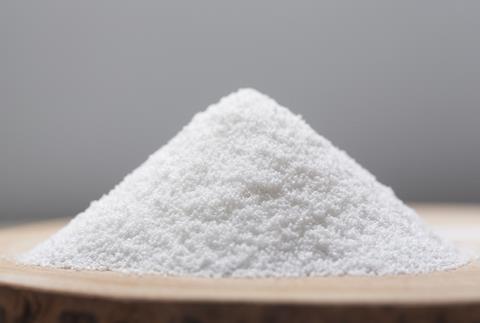
4. Concerns are mounting over soft drinks sweetener aspartame
Earlier this month, the World Health Organization (WHO) classified artificial sweetener aspartame as a “potential carcinogen”. The WHO has since made clear that “safety is not a major concern at the doses which are commonly used”, but the media frenzy around the announcement will only serve to fuel concerns around the ingredient.
Even prior to the WHO announcement, many consumers were wary of artificial sweeteners. When a recent YouGov poll of over 3,000 adults asked whether artificial sweetners were better or worse for you than sugar, 31% answered ’about the same’, and 41% viewed them as worse, while just 12% thought they were better.
Carabao states that aspartame is particularly problematic for sport drinkers, citing 2022 consumer research from Vypr, which revealed that 60% of regular Isotonic Sports Drink drinkers who exercise weekly are very concerned about the presence of the artificial sweetener in sport drinks. As a result the firm opted to avoid using aspartame in its new sports drinks, although the sweetener is still present in the majority of the brand’s energy drinks. It also features in the ingredients lists for Irn-Bru No Sugar Energy, Lucozade Energy and numerous other soft drinks.
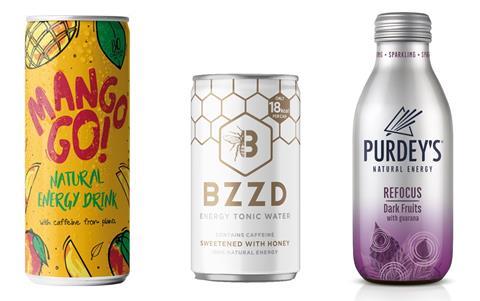
5. Natural energy drinks are opening up the market
While aspartame remains under scrutiny, drinks boasting more ‘natural’ profiles can open up new opportunities.
Britvic points out that energy drinks’ £96.9m growth in convenience last year (IRI) came from just 8% of shoppers who currently buy them (Kantar).
Head of channel development Reena Bilakhia points out that this is despite one in eight UK adults saying that they feel tired all the time, and a further quarter saying they feel tired most of the time [YouGov]. Britvic forecasts that energy drinks could add an extra £100m to convenience retailers’ sales by 2025 – that’s £2,089 per store – if retailers offered a wider choice of energising products, including HFSS-compliant drinks and natural energy lines, such as Purdeys, which contains guarana and ginseng.
Bzzd Energy tonic water claims that the top energy drinks brands are “missing the mark” when it comes to meeting the needs of a more health-concious consumer. “Whilst many leading energy drinks use synthetic caffeine and sweeteners, Bzzd Energy is powered by nature,” says Louise Lloyd, founder of the drink, which contains caffeine extracted from natural plant sources, pure Blossom Honey and stevia.
Ben Mckechnie, managing director of healthy snacks and drinks wholesaler Epicurium, says: “Natural energy – drinks without the heavy sugar and artificial caffeine load of the traditional energy drink – are making energy an all-day option. They provide a gentle perk-up and aid concentration, rather than the jittery palpitations for the big cans.” Epicurium offers brands such as Grenade Energy, Mango Go, Nocco, Peak, Tenzing and Virtue Clean Energy, which can give retailers a point of difference.
The interest in these products isn’t just about the ingredients, but their market positioning. “Most activity we are seeing is in products that are losing more ‘masculine’ branding and replacing it with a more neutral tone that opens the market up to more females,” Mckechnie explains.

6. Growing gym attendance is making energy drinks work harder
One in eight people in the UK are currently a member of a gym, with a further one in five planning to join one in 2023 (PureGym). Over the past year, performance energy drinks – those with added benefits specifically to support workouts – have increased by 22.9% (Nielsen).
Reign Total Body Fuel accounts for more than half of all value sales. It offers a combination of 200ml caffeine, branded-chain amino acids to help prevent protein muscle breakdown and L-Arginine to improve blood flow.
The brand added a new flavour earlier this year with Mang-o-Matic. Pippa Collins, associate director commercial development at CCEP GB, says: “We know mango is a popular flavour, in fact Monster Juiced Mango Loco is our No.1 selling variant within our Juiced range [Nielsen] and Monster Ultra Fiesta Mango is our no.2 selling variant [ibid] within our zero sugar Ultra range so we’re sure this new launch will be in high demand.”
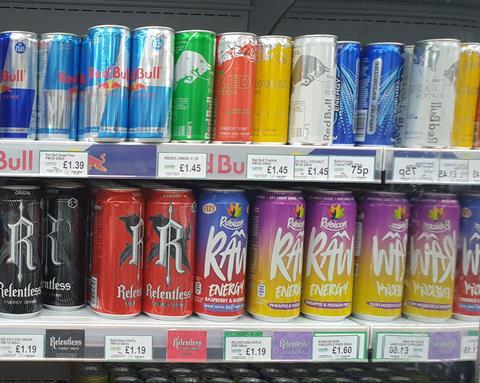
7. Flavours are growing faster than original energy
Flavoured energy now accounts for half of all volume of soft drinks sold (IRI) and the segment is growing faster than original energy, following 48% growth year on year.
“Thirty-nine per cent of stimulation shoppers make their purchase based on flavour alone [Cousins & Davis],” says Adrian Hipkiss, marketing director at Boost Drinks.
Britvic reveals that Red Bull Apricot-Strawberry Summer Edition was the biggest energy drinks launch in convenience last year, closely by Monster Energy Pineapple and Relentless Zero Sugar Raspberry. Flavoured energy drinks made up six of the top 10 soft drinks launches in 2022, according to the BSDR.
Offering a range of flavours can help to extend the reach of energy drinks. “Our research highlights that 24% of people who don’t currently buy energy drinks say they would try a flavour,” states Red Bull. Value sales of the brand’s flavours-focused Editions range doubled in size over summer 2022, and 62% of the range’s spend come from female buyers [Kantar Worldpanel]. This year Red Bull made the Apricot-Strawberry flavour a permanent member of the Editions range and introduced Juneberry as its Summer Edition flavour.
“Red Bull is our bestselling brand and we’ve done well with its Editions range this year,” says Abdul. “The new Juneberry flavour is proving very popular.”
However, there are no clear over-arching trends emerging when looking at the most popular flavours of energy drink. Circana data shows that while apple, berry, orange, tropical, lime and lemon have had modest volume share growth in the past year (at the expense of cherry and mango), there is no surge in any direction. The takeaway for retailers is that maintaining a broad range of flavours remains important.
“Innovation is key to increasing sales, delivering 29% of all category growth last year [Nielsen],” says Amy Burgess, senior trade communications manager at Coca-Cola Europacific Partners. “Options like Monster Ultra Rosa and Monster Aussie Style Lemonade are key to making the most of the growing energy opportunity.”




















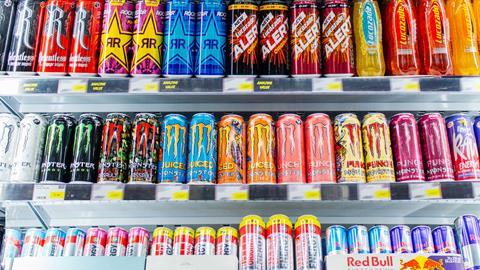


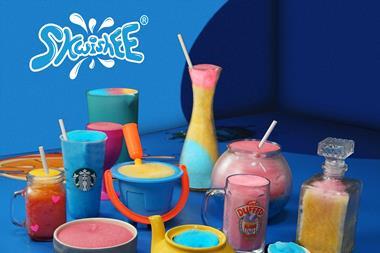
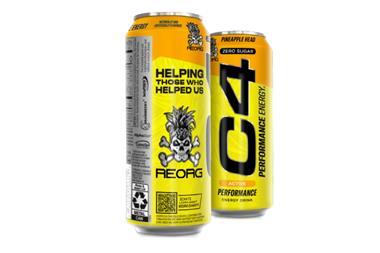

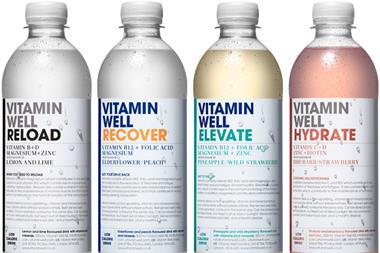

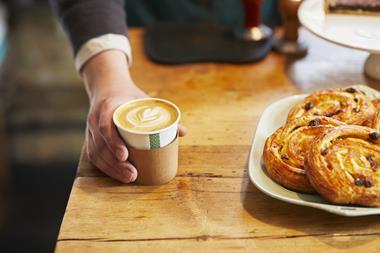


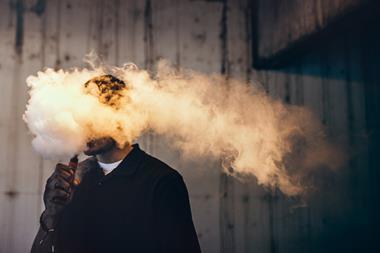

No comments yet